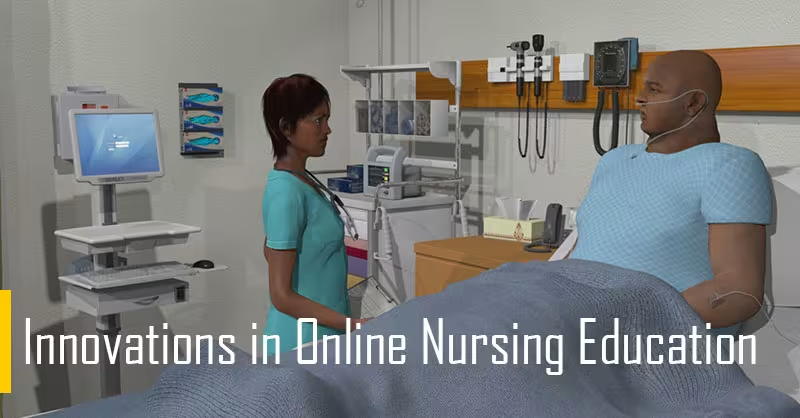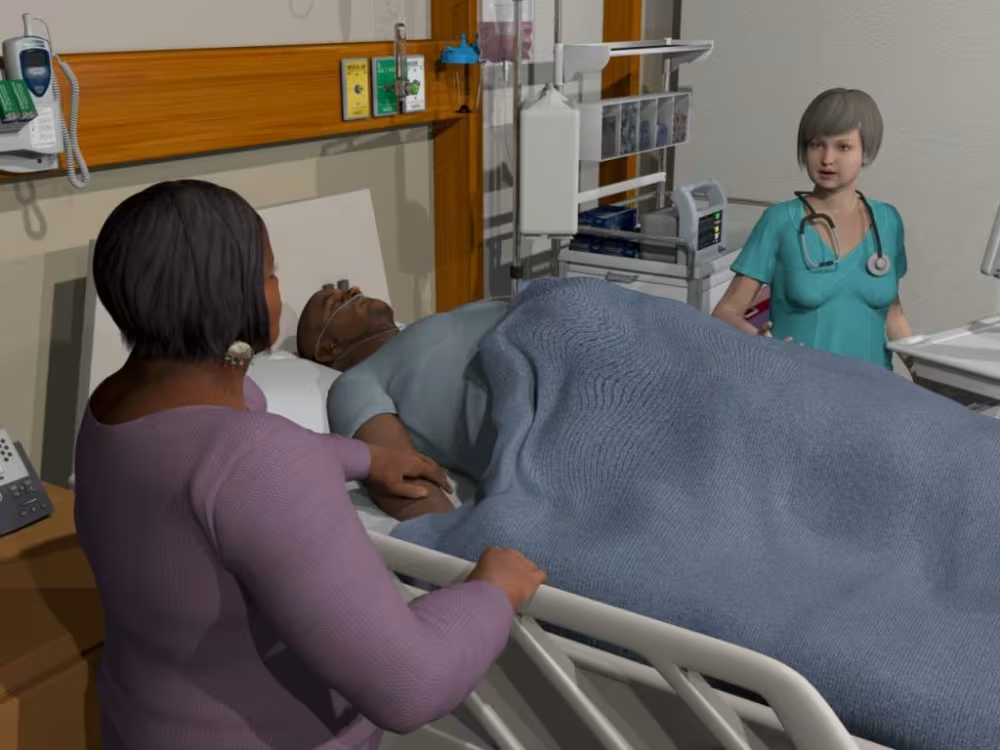Education Innovation: How Online Coursework Engages Students
Each blog post is dated and contains accurate information as of that date. Certain information may have changed since the blog post publication date. If you would like to confirm the current accuracy of blog information, please visit our Direct Entry MSN overview page or contact admissions at (866) 891-8438.
Being able to study for an online course from anywhere with a Wi-Fi connection is certainly attractive to today’s jack of all trades, but that’s only one of the many reasons more students are turning to online learning. Believe it or not, online courses are beginning to outperform face-to-face courses (according to Babson Survey Research Group), and it’s because of the unique and interactive ways students can engage with the content. Instructional designers for the Direct Entry MSN Online courses at Marquette University know that innovations in online education are attracting more students, which is why they were eager to explain how they do it.
The days of logging into a learning management system (LMS), reading a text-heavy document or PowerPoint presentation, and answering questions about the material are slowing fading. Through graphic design, 3-D animations and simulated scenarios, Marquette University’s Direct Entry MSN Online students are able to actively engage with course material. For example, in an anatomy or physiology course, a student could view 3D images of the human body that have been animated to show height, weight, and various systems within the body.

In some courses, students will revisit certain animated case studies several times, which is quite the step up from the crossword puzzles and PowerPoint presentations of yesteryear.
“Students have to notice small details about the characters because they will revisit these same characters throughout their curriculum,” says Beth Bruner, Instructional Design and E-Learning Manager for Marquette University’s Direct Entry MSN program.
A case study might follow a teen mother through her prenatal and post-natal doctor visits, or may follow an elderly outpatient who requires home visits. In either case, a student might be required to recall a patient’s appearance, location, interests or eating habits. Taking note of these things will help a nurse or health practitioner better assess a patient’s condition or give insight to what treatments are best.
Engaging Students with Authentic Design
Designing an online course activity/module is an extensive and creative project, sometimes taking up to eight months to complete. While instructional designers do not provide input or have involvement in choosing the course material, they definitely influence how the material is taught.
“We try to focus on things students typically struggle with,” says Beth. “We work closely with faculty and create the animations in-house to make sure they tie closely with the course’s learning outcomes.”
Instructional designers solicit feedback from faculty, utilize course evaluations, and capture student grades to understand which concepts students struggle with most. They then use this insight to flush out course activities, designing each activity manually.
“We really try to get away from typical lectures,” says Beth.
Instructional designers think outside of the box to come up with ways to make course curriculum come to life.
Every aspect of the learning modules – from the images, audio, and video down to the answers – is enhanced to better engage students. According to Mike, once an assignment is complete, students don’t just see the answers they’ve chosen, they also see feedback from the instructor on why the answer is right or wrong. Students notice and appreciate small innovations like these.
Though the team at Marquette University knows the importance of engaging students, they also know the value of traditional education methods.
“These modules don’t replace textbooks or lectures, they’re just one of the resources for students.”
Creative Design Is Key, but So Is Ease
Engaging students through interactive activities and animated modules is just one reason why students enjoy the coursework at Marquette University. Another reason is that each course is designed with a standard blueprint, making every course user-friendly.
The course components are the same for every class:
- Learning Outcomes – what the student can expect to learn in the course
- Read and Study Materials – the required textbooks and materials the student will need
- Learning Activities – a list of assignments the student will be required to complete
- Assessment – gives the student access to discussion forums or other assignments in the course
- Review – a summary of the lesson and self-assessment on the lesson material
“The consistent design becomes really empowering for students,” says Mark Gbur, Director of Product and E-Learning for Marquette University. According to Mark, students become acclimated with navigation courses, finding content, understanding expectations, and completing coursework all within their first few weeks.
Experience Marquette University for Yourself
The Direct Entry MSN Online course developers at Marquette University are continuously looking for ways to engage its nursing students. The curriculum is more interactive (almost video game-like) and dynamic than it’s ever been. And the instructional designers continually optimize or create new case studies and learning activities for the nursing curriculum.

Students with non-nursing baccalaureate degrees can complete the Direct Entry MSN Online coursework to enter the field of nursing at a graduate level. Often in pursuit of a career change, students choose Marquette University because it provides an accelerated path to a stable career in nursing. The program can be completed in as few as 18 months and combines online coursework, on-site hands-on skills labs, and in-hospital clinical rotations to prepare students to sit for the NCLEX-RN exam.
Having the flexibility of online coursework allows students to start the program without disrupting their schedules too much. Once those courses are complete, students will have had time to adjust their lives/schedules for the in-person portion of the program. When the program is completed, students receive their Master of Science in Nursing and are more than ready to take on the field of nursing.
If you have a non-nursing bachelor’s degree and are considering a career in nursing, compliment your undergraduate degree with a graduate degree in nursing. Taking that next step is easier than you think. Contact one of our admissions advisers today to see how you can get started!
